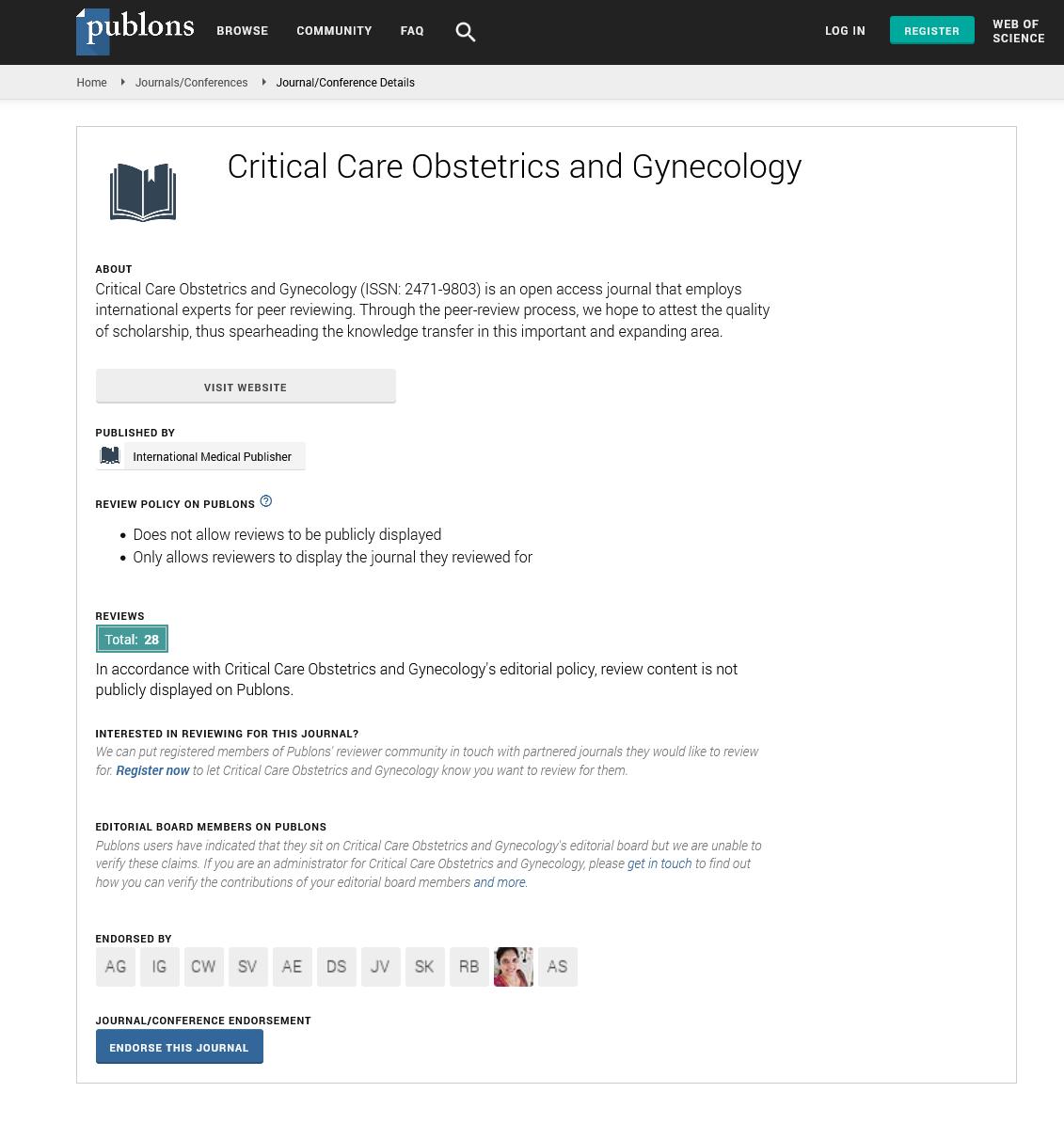ISSN : 2471-9803
Critical Care Obstetrics and Gynecology
Treatment of (bulky) stage IB cervical cancer with or without neoadjuvant vincristine and cisplatin prior to radical hysterectomy and pelvic/para-aortic lymphadenectomy: A phase III trial of the gynaecologic oncology group
European Congress on Vaccines & Vaccination and Gynecologic Oncology
October 26 -27, 2018 Budapest , Hungary
Zeyad Esmael Alousta
Misurata medical centre, Libiya
Posters & Accepted Abstracts: Crit Care Obst & Gyne
DOI: 10.21767/2471-9803-C1-003
Abstract
Objective: A Randomized phase III trial was conducted to determine if neoadjuvant chemotherapy (NACT) prior to radical hysterectomy and pelvic/para-aortic lymphadenectomy (RHPPL) could improve progression-free survival (PFS) and overall survival (OS), as well as operability, with acceptable levels of toxicity. Adjuvant radiation therapy was prescribed for specific surgical/pathological risk factors for both regimens. Methods: Eligible patients were required to have bulky FIGO stage IB cervical cancer, tumor diameter ≥4 cm, adequate bone marrow, renal and hepatic function, and performance status ≤2. Prospective random allocation was to either NACT (vincristine-cisplatin chemotherapy every 10 days for 3 cycles) before exploratory laparotomy and planned RHPPL (NACT+RHPPL), or RHPPL only. Results: The study was closed prematurely, because of slow accrual, after 291 patients were enrolled, three were ineligible; thus 288 were eligible and randomly allocated to RHPPL (N=143) or NACT+RHPPL (N=145). There were no notable differences between regimens regarding patients’ age, race, performance status, or tumour size. The median follow-up time is 62 months among living patients. The NACT+RHPPL group had very similar recurrence rates (relative risk: 0.998) and death rates (relative risk: 1.008) when compared to the RHPPL group. There were 79% that had surgery in the RHPPL group compared to 78% in the NACT RHPPL group. There were 52% who received post-operative RT in the RHPPL group compared to 45% in the NACT+RHPPL group (not statistically significant). Conclusion: There is no evidence from this trial that NACT offered any additional objective benefit to patients undergoing RHPPL for suboptimal stage IB cervical cancer.
Biography
E-mail:
zalousta217@gmail.com
Google Scholar citation report
Citations : 148
Critical Care Obstetrics and Gynecology received 148 citations as per Google Scholar report
Critical Care Obstetrics and Gynecology peer review process verified at publons
Abstracted/Indexed in
- Google Scholar
- China National Knowledge Infrastructure (CNKI)
- WorldCat
- Publons
- Geneva Foundation for Medical Education and Research
- Secret Search Engine Labs
Open Access Journals
- Aquaculture & Veterinary Science
- Chemistry & Chemical Sciences
- Clinical Sciences
- Engineering
- General Science
- Genetics & Molecular Biology
- Health Care & Nursing
- Immunology & Microbiology
- Materials Science
- Mathematics & Physics
- Medical Sciences
- Neurology & Psychiatry
- Oncology & Cancer Science
- Pharmaceutical Sciences
